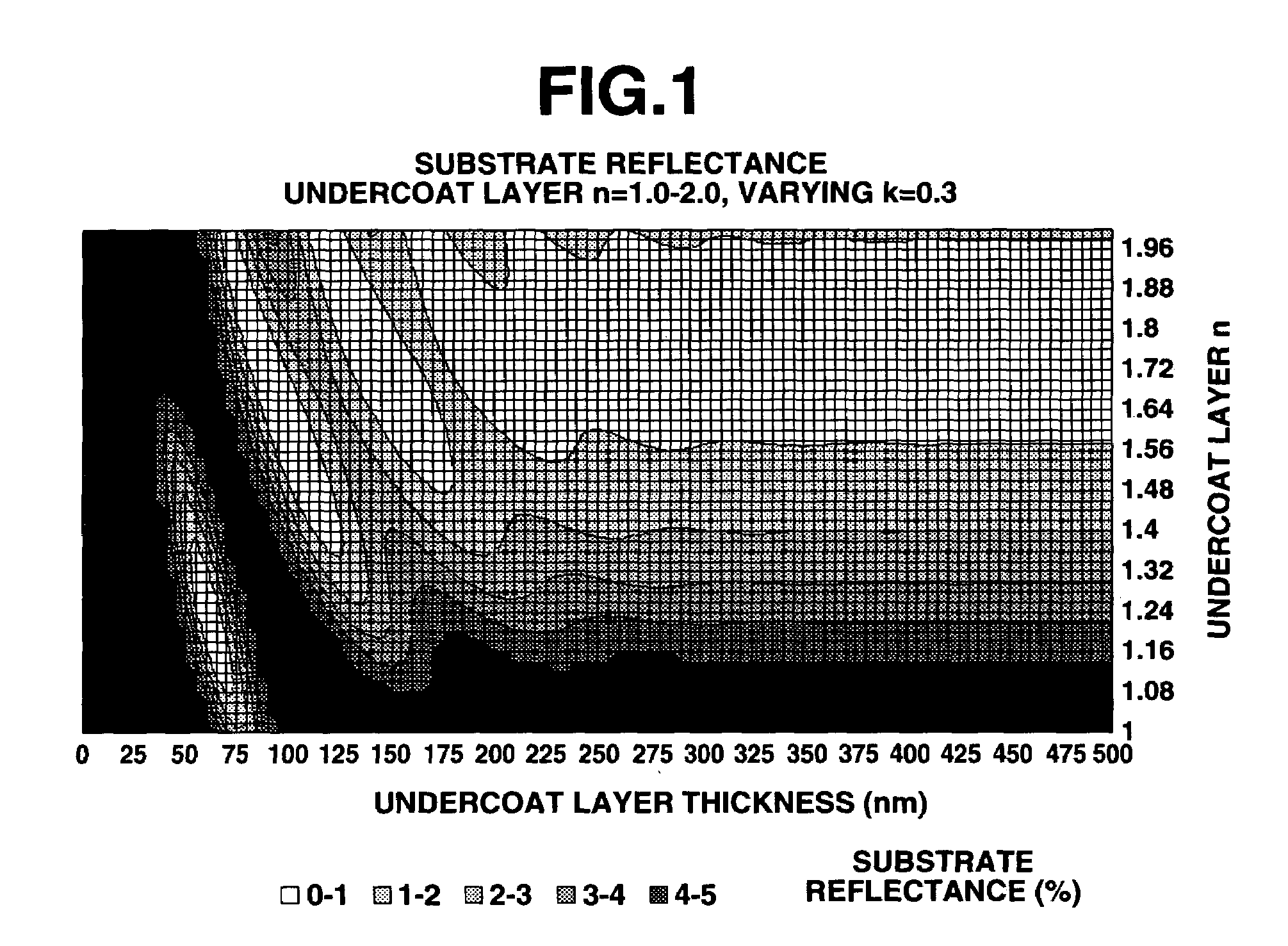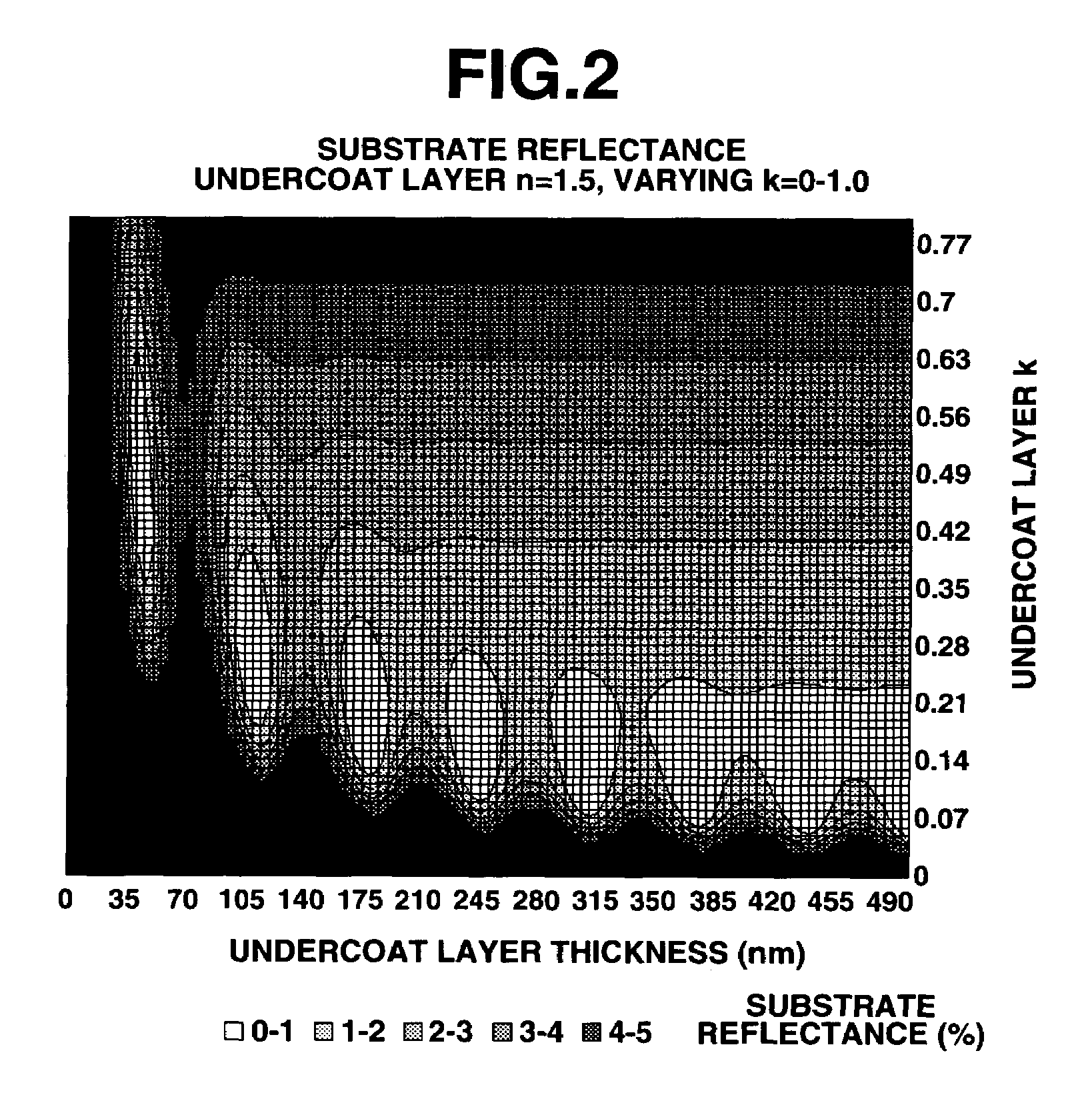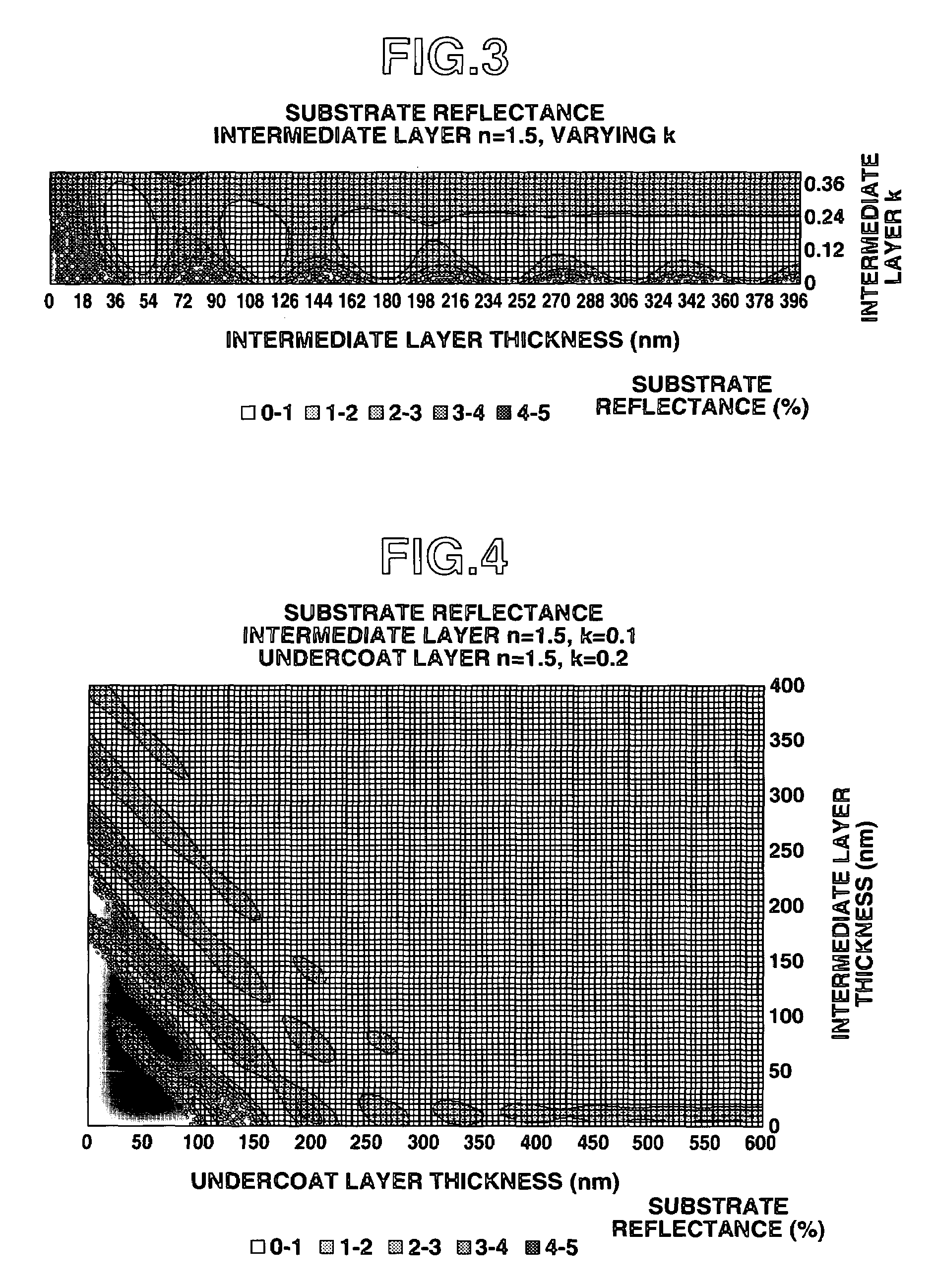Photoresist undercoat-forming material and patterning process
a technology of undercoat and patterning material, which is applied in the direction of photosensitive materials, photomechanical equipment, instruments, etc., can solve the problems of increasing the serious concern of surface roughness after etching, weak resistance of acrylic polymer to substrate etching, and approaching the essential limit of resolution determined by light source wavelength, etc., to achieve high etching resistance
- Summary
- Abstract
- Description
- Claims
- Application Information
AI Technical Summary
Benefits of technology
Problems solved by technology
Method used
Image
Examples
synthesis example 1
[0265]A 300-ml flask was charged with 200 g of Compound 1, shown below, 75 g of 37% formalin in water, and 5 g of oxalic acid. With stirring, reaction took place at 100° C. for 24 hours. At the end of reaction, the reaction solution was dissolved in 500 ml of methyl isobutyl ketone, thoroughly washed with water to remove the catalyst and metal impurities, and heated in vacuo to evaporate off the solvent. This was followed by evacuation to 2 mmHg at 150° C. to remove water and the unreacted monomers, leaving 163 g of Polymer 1, shown below.
[0266]The molecular weight (Mw) and dispersity (Mw / Mn) of Polymer 1 were determined by GPC. From 1H-NMR analysis, the ratio of monomer units in the polymer was determined.
Mw=8,000
Mw / Mn=4.30
[0267]
synthesis example 2
[0268]A 300-ml flask was charged with 200 g of Compound 2, shown below, 75 g of 37% formalin in water, and 5 g of oxalic acid. With stirring, reaction took place at 100° C. for 24 hours. At the end of reaction, the reaction solution was dissolved in 500 ml of methyl isobutyl ketone, thoroughly washed with water to remove the catalyst and metal impurities, and heated in vacuo to evaporate off the solvent. This was followed by evacuation to 2 mmHg at 150° C. to remove water and the unreacted monomers, leaving 188 g of Polymer 2, shown below.
[0269]The molecular weight (Mw) and dispersity (Mw / Mn) of Polymer 2 were determined by GPC. From 1H-NMR analysis, the ratio of monomer units in the polymer was determined.
Mw=9,500
Mw / Mn=4.80
[0270]
[0271]Compounds 1 to 6, shown below, were used as the specific bisphenol compound with a group of many carbon atoms.
[0272]
[0273]As the blending polymer, Polymer 3 is an indene-hydroxystyrene copolymer obtained through cationic polymerization, Polymer 4 is a...
PUM
| Property | Measurement | Unit |
|---|---|---|
| wavelength | aaaaa | aaaaa |
| size | aaaaa | aaaaa |
| reflectance | aaaaa | aaaaa |
Abstract
Description
Claims
Application Information
 Login to View More
Login to View More - R&D
- Intellectual Property
- Life Sciences
- Materials
- Tech Scout
- Unparalleled Data Quality
- Higher Quality Content
- 60% Fewer Hallucinations
Browse by: Latest US Patents, China's latest patents, Technical Efficacy Thesaurus, Application Domain, Technology Topic, Popular Technical Reports.
© 2025 PatSnap. All rights reserved.Legal|Privacy policy|Modern Slavery Act Transparency Statement|Sitemap|About US| Contact US: help@patsnap.com



